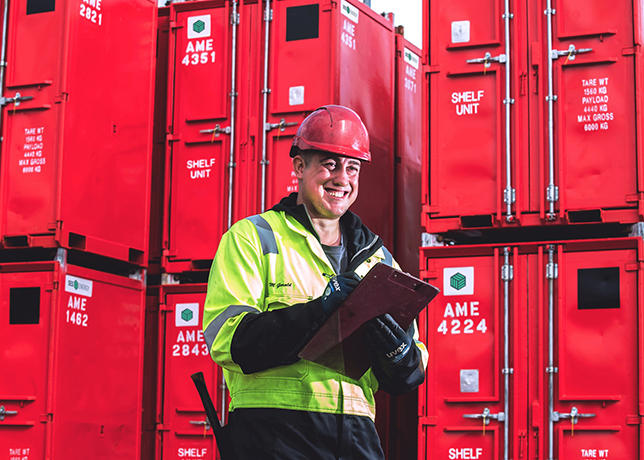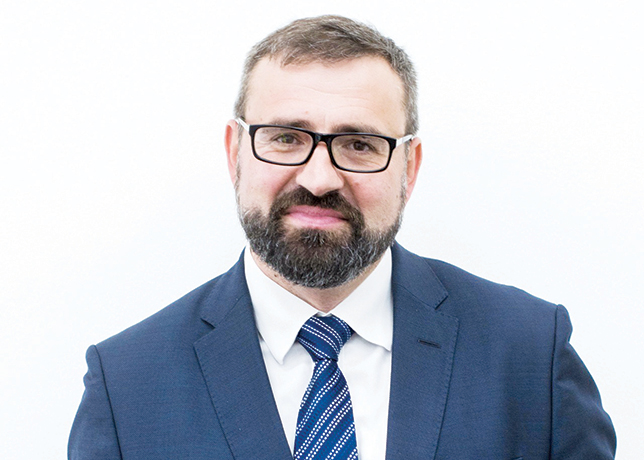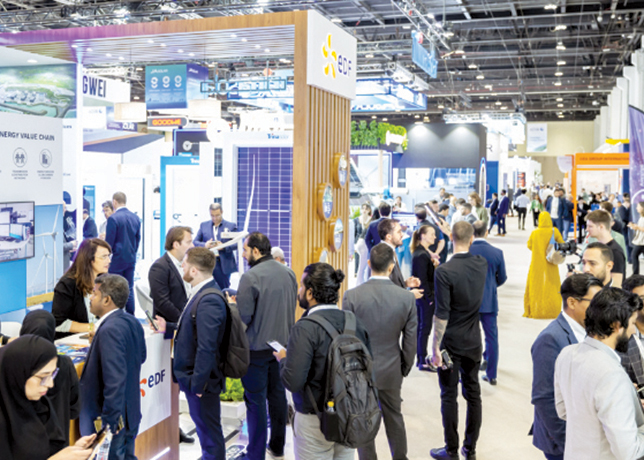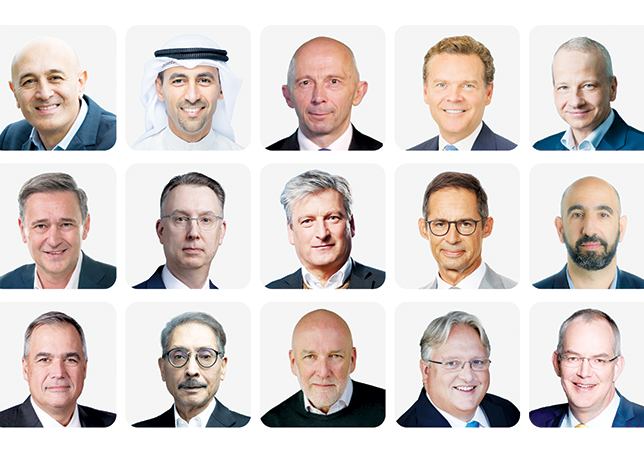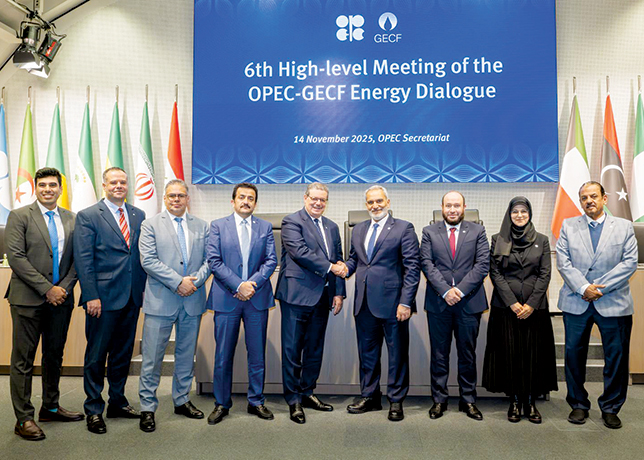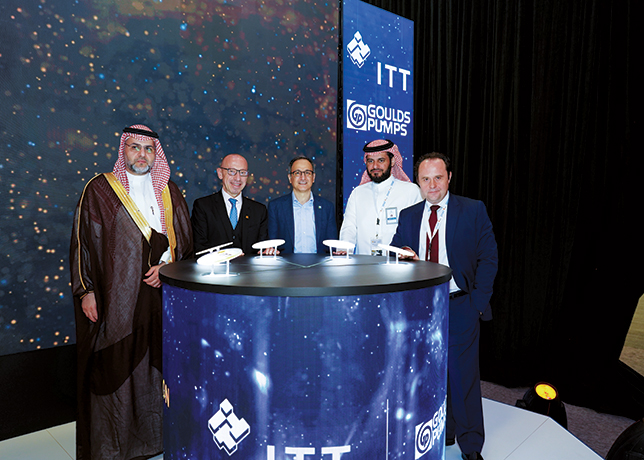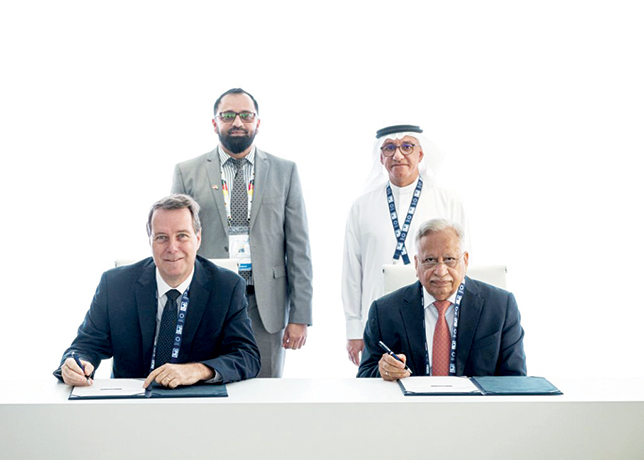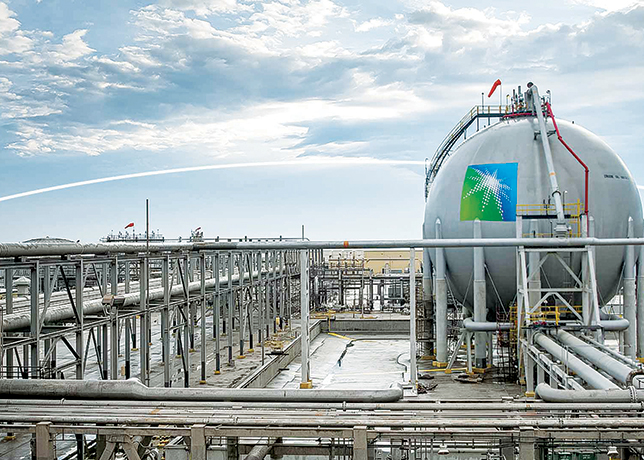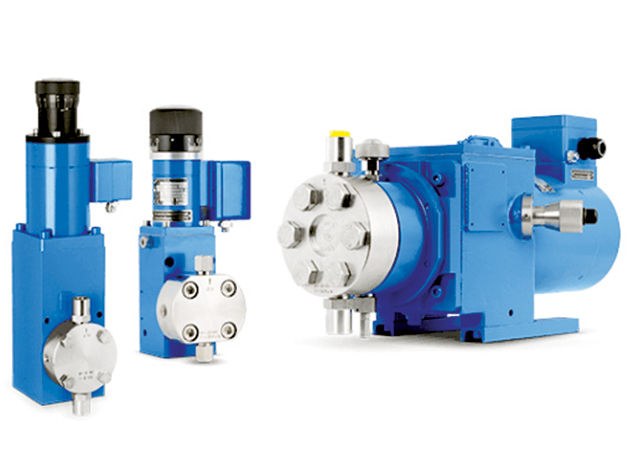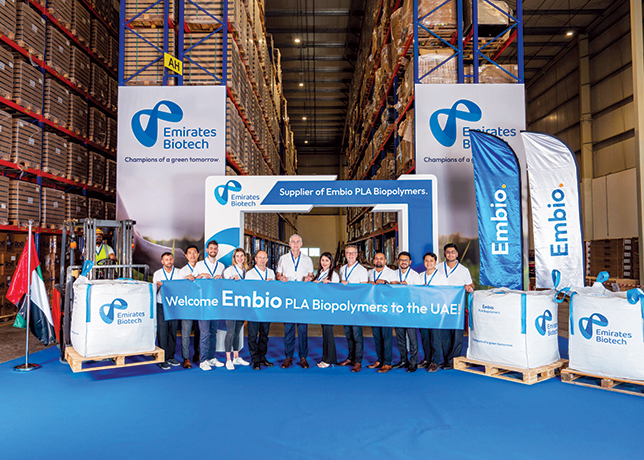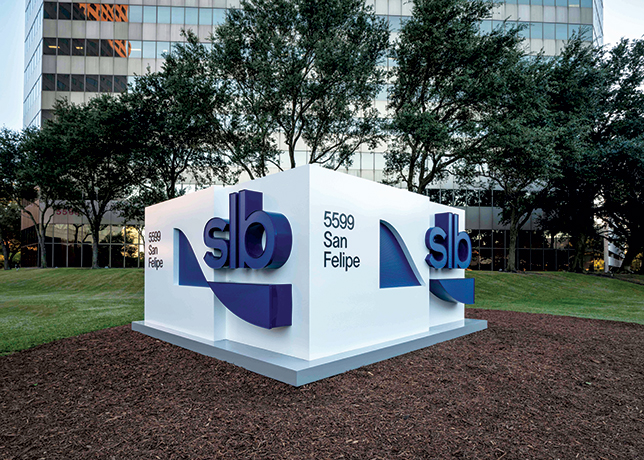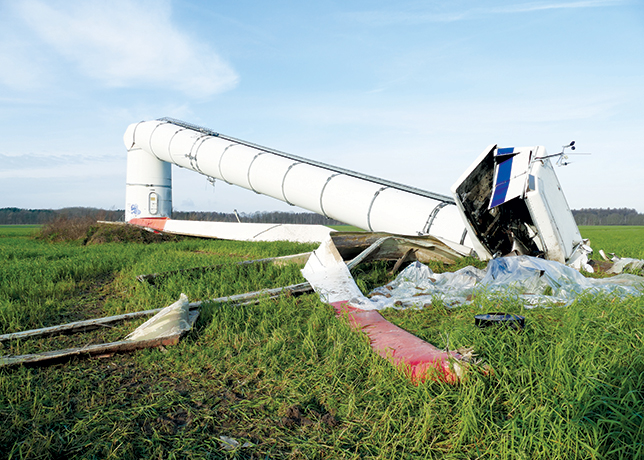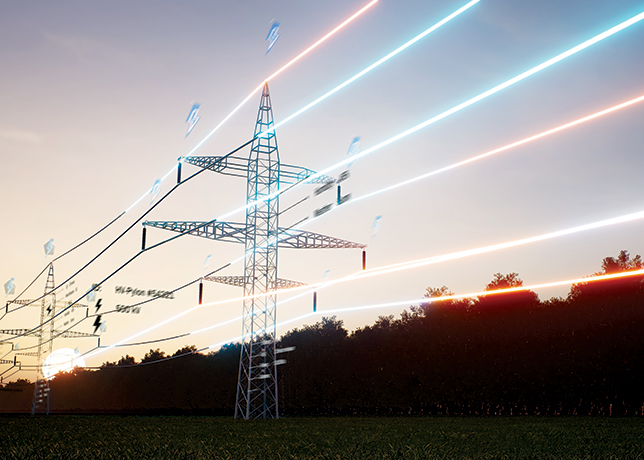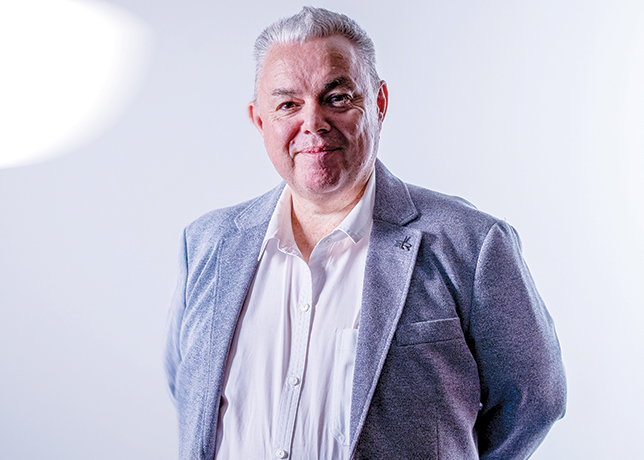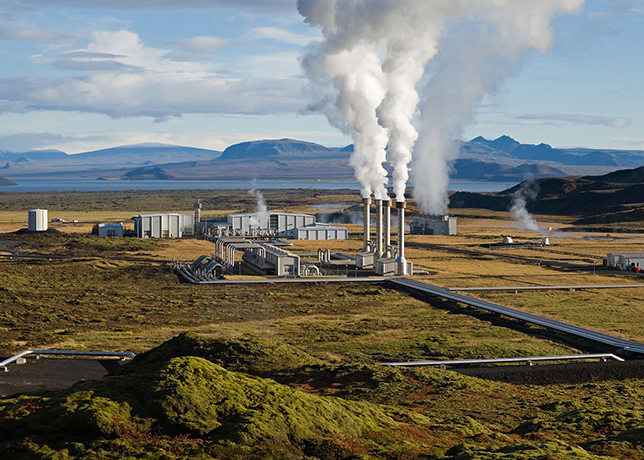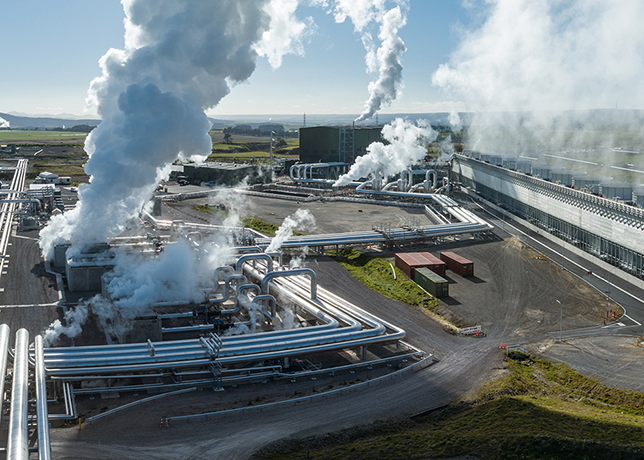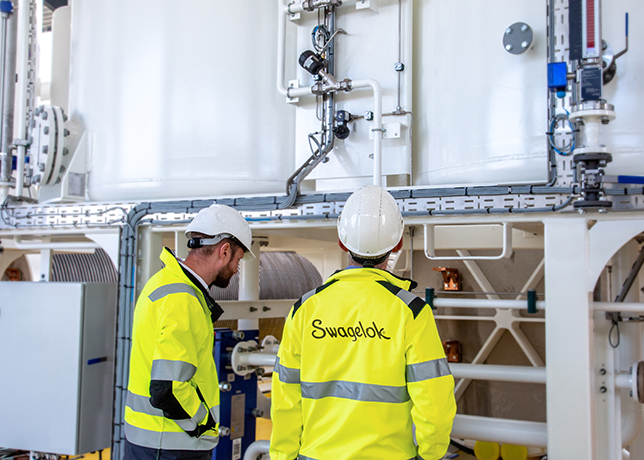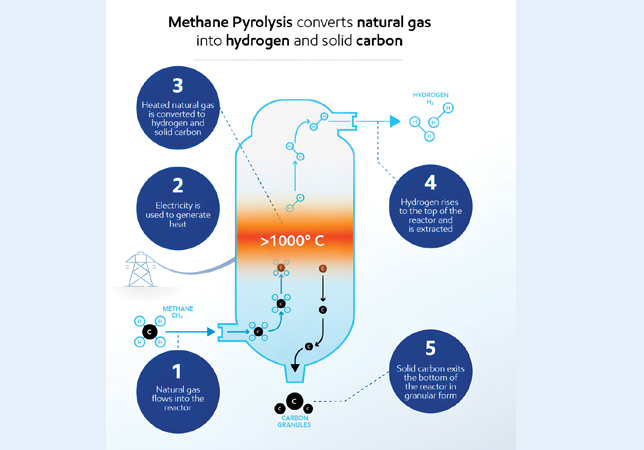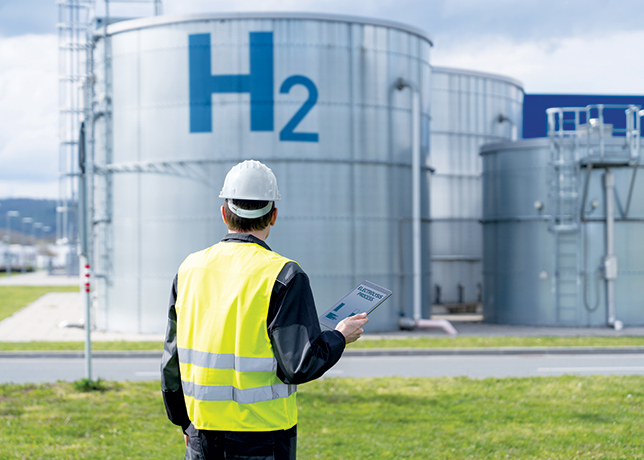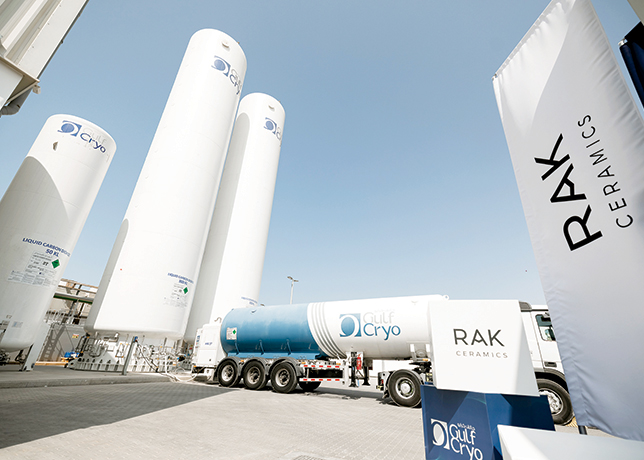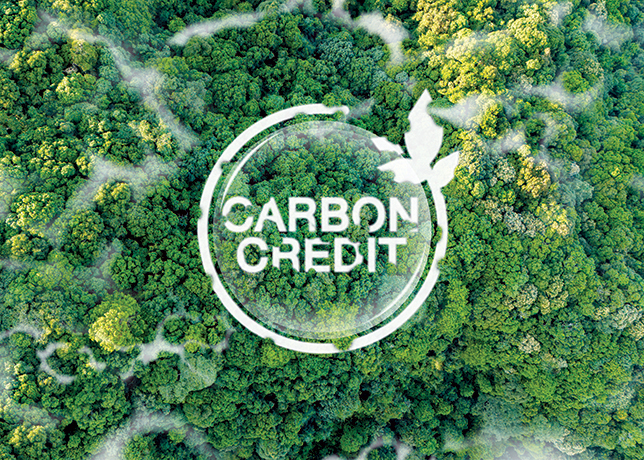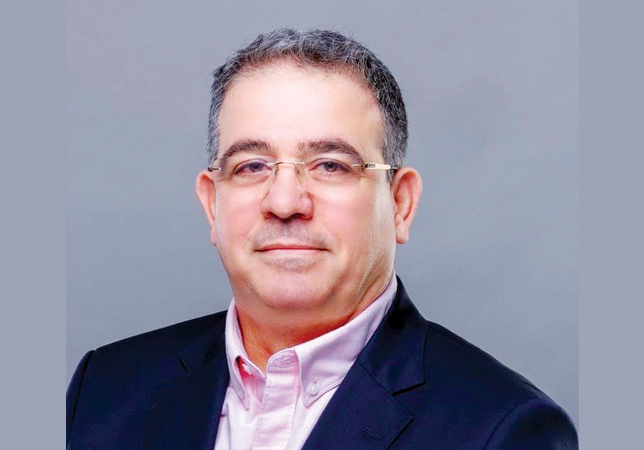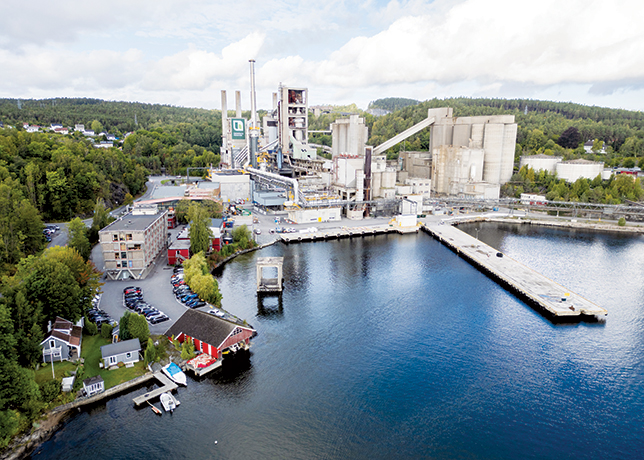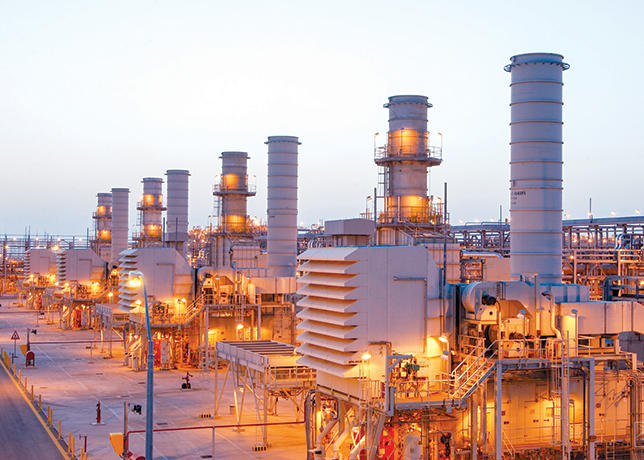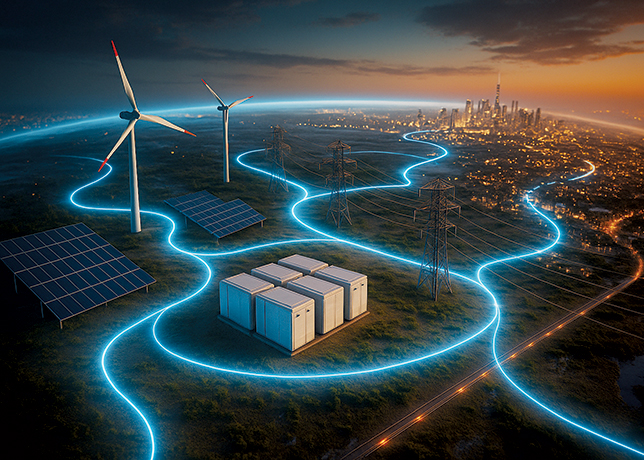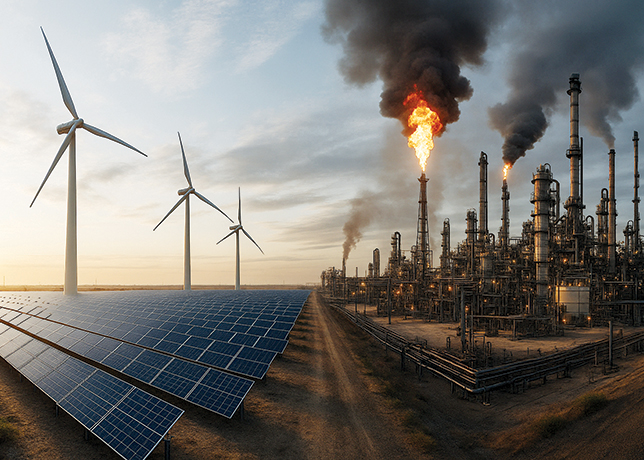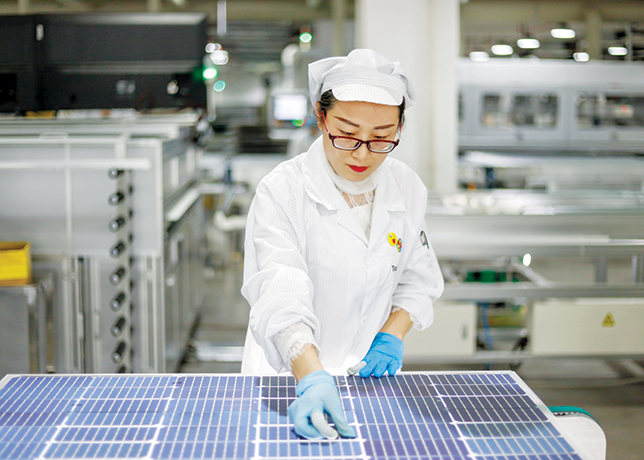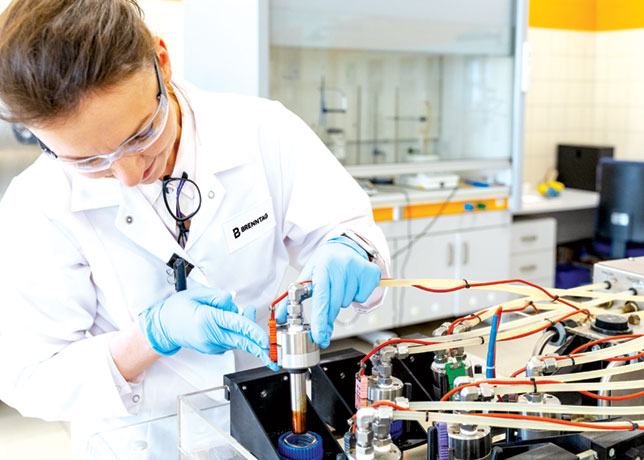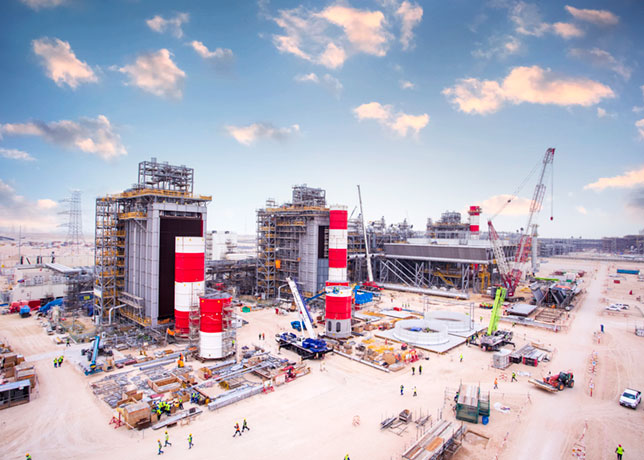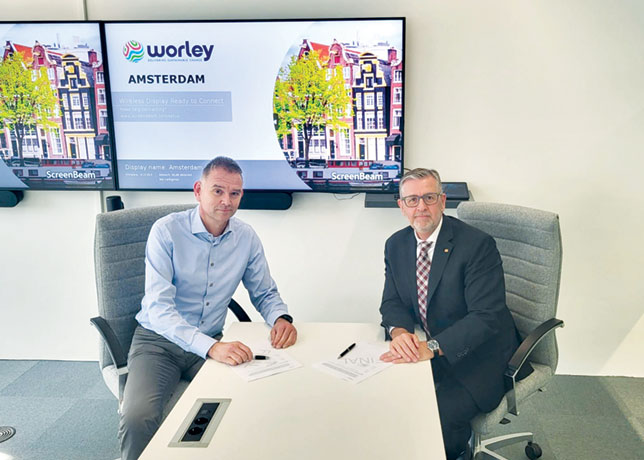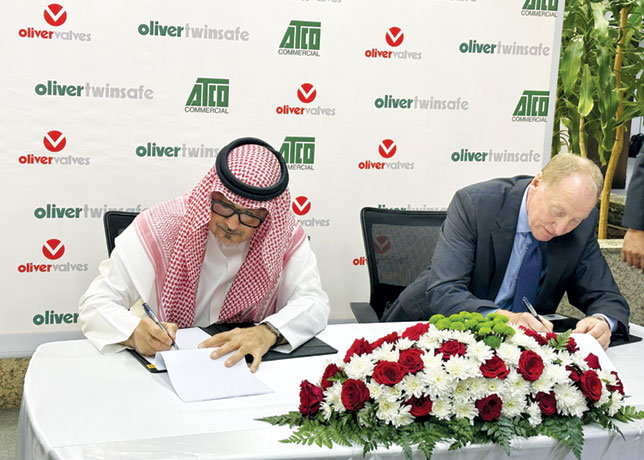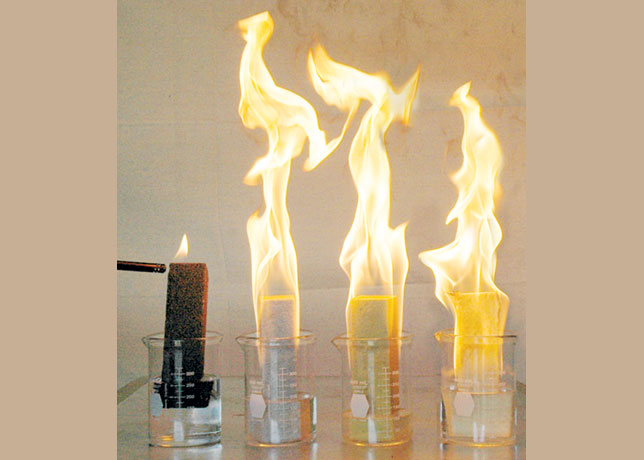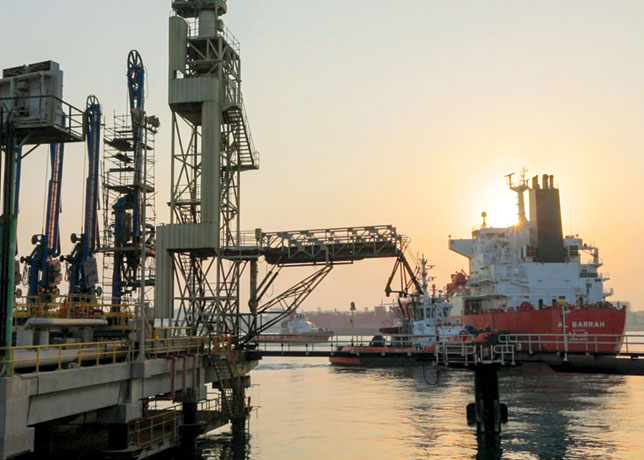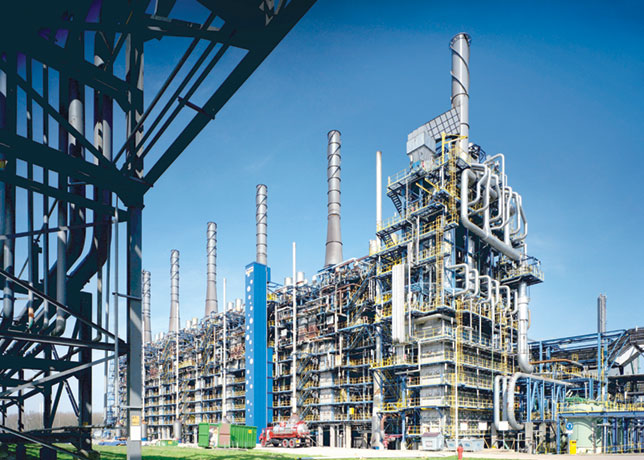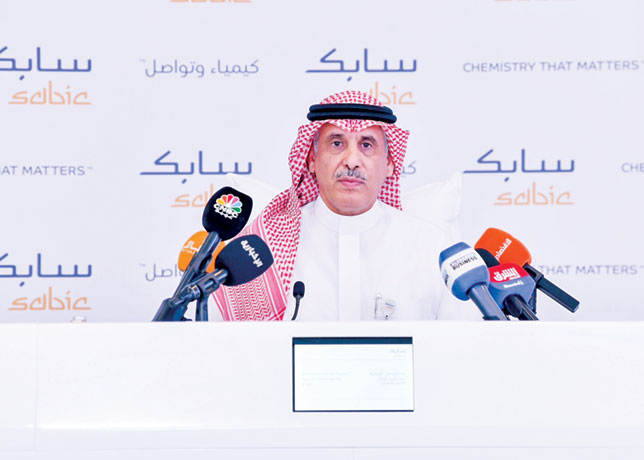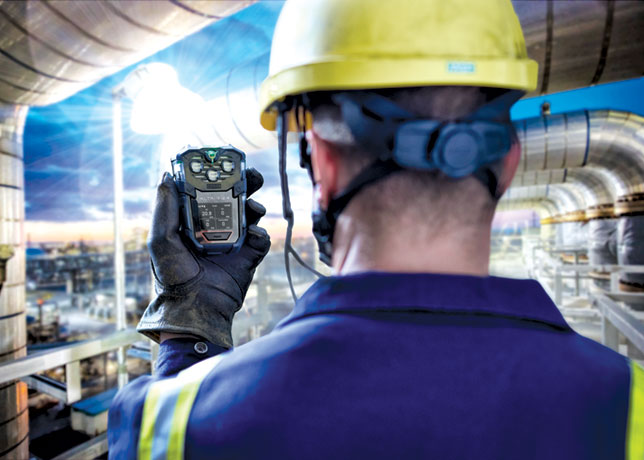
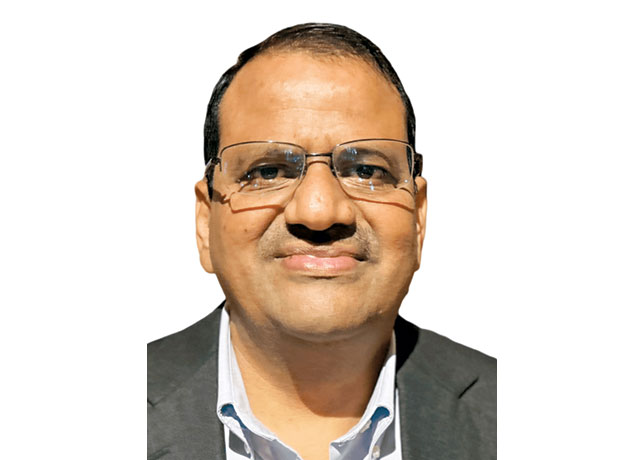 Naveen Kumar
Naveen Kumar
AVEVA’s AI and data solutions boost efficiency, resilience, and sustainability in chemicals, from feedstock optimisation to predictive analytics, as Gulf firms adopt cloud and digital twin tech for smarter operations, Naveen Kumar tells OGN
As the digital revolution sweeps through the industrial world, the chemical sector finds itself balancing legacy infrastructure with emerging technologies that promise transformative efficiency and resilience.
At AVEVA World in San Francisco, Naveen Kumar, Vice President – Chemicals, Natural Resources and Manufacturing, AVEVA. shared his insights with OGN energy magazine on how the sector is evolving in response to these forces, and how the company’s solutions are helping shape that future.
Artificial intelligence (AI) is no longer a buzzword but a catalyst for tangible change.
Kumar noted that as AI moves from hype to practical application, human-AI collaboration is key to drive real progress in industrial settings.
He emphasised that the journey toward full industrial AI integration will rely on patient advancement, human oversight, and trust in technology.
Kumar highlighted the growing importance of robust data infrastructure, which enables real-time collaboration across organisations.
Whether it’s optimising feedstock sourcing or enabling traceability for EV batteries and pharmaceuticals, the ability to connect, analyse, and share data is becoming a cornerstone of industrial resilience.
 |
AVEVA's Connect dashboard visualisation |
He acknowledged that data quality remains a significant hurdle, one AVEVA tackles through advanced simulations and automated reconciliation technologies like production accounting.
These tools not only fill gaps and validate inputs but also enable predictive scenario planning, offering executives a clearer view of future emissions and operational outcomes.
The following are excerpts from the interview:
How are digital technologies reshaping the chemical industry, and what role does AVEVA play, especially within the Gulf region?
First, it's important to clarify what we mean by ‘chemical’. At AVEVA, we define it starting from the crackers, then going downstream into bulk chemicals, polymers, fibres, fertilisers, and eventually speciality chemicals.
PI data infrastructure and AVEVA Connect are the foundational layer of anything we do in data and digital technologies.
Some of the largest petrochemical companies in the Gulf region are already on our platform.
That means we're able to pull data into Connect and then route it to different applications to deliver varied outcomes.
In the case of naphtha crackers, feedstock selection is a big issue. In the Gulf, it's mostly domestic – refinery naphtha - so they don’t face that challenge as much, though some are shifting to gas-based cracking.
We offer planning tools that help identify the most profitable naphtha feedstock for a given asset; because when you're running a cracker, it's not just about the furnaces, it's also about the types of furnaces and the downstream plants and getting the right balance.
Another well-established digital technology that is used by a lot of large companies across their business globally is the AVEVA process optimisation platform.
It fits under what we call autonomous operations. When you look at a plant, you start with the DCS (distributed control system) layer, which controls the plant in milliseconds.
On top of that is advanced process control (APC), which runs every minute or so. It builds a linear model after doing a step test, and once an operator sets the point, APC takes over.
What we do with real-time optimisation, or a real process optimisation, is a layer on top that lets you define an objective, such as maximising profit.
You feed in pricing and plant data, it calibrates and optimises the plant, and writes back the set points.
Historically, we’ve seen even fully constrained plants gain a few percentage points in throughput.
And in today’s demand-constrained market, the same product can be manufactured with less feedstock; or in multi-train facilities, production can be balanced more profitably.
When we go downstream of crackers – speciality chemicals and fertilisers – this technology could be like a sledgehammer for such plants.
For instance, Indian fertiliser company Coromandel presented how they moved PI data to the cloud, to Connect and advanced analytics and used that data to optimise the process parameters.
That covers established factories. What about new builds?
What I just described mostly applies to established crackers. Even before the design phase, in the conceptual or feasibility stages, companies must decide what configuration to go for, what type of technology, which downstream units, and so forth. That’s where our supply chain tools support masterplanning.
As you progress into the build phase, our concept of digital engineering becomes vital. Unified Engineering allows you to set up the project in the cloud, enabling globally distributed teams – EPC firms, suppliers – to collaborate across regions and hand over a digital twin to the operator.
The second thing that happens is that when you build that model and do a digital handover, and transfer that model into the operations, we can then link it back to the PI to bring in the operational data.
The other technology we talk about is the digital reliability, where our anomaly detection models look at what we call as predictive analytics.
And in the same framework, comes the dashboarding that we would do in UOC.
Adnoc Panorama, which was delivered in 2017-2018, is an example. It’s a massive decision-support centre with a 50-m-wide, 5-m-tall wall that pulls data from 18 different sources – refineries, upstream operations, petrochemicals and downstream fertilisers.
So, if you see a problem in an equipment, you're able to see where it occurred, you're able to pull out the data sheets and drawings, and actually create a work order right from there.
The chemical sector faces increasing challenges, from supply chain disruptions to regulatory pressures. How can a robust data infrastructure and AI-driven insights help build resilience?
From our perspective, we focus on two major aspects. First is supply chain optimisation: Identifying where to source feedstock and running scenarios to determine long-term profitability.
The second is connected data. I can give you an example of how Connect is being used. One petrochemical company shares plant data through Connect with a process licensor, enabling real-time monitoring and adjustments.
Traceability is also critical, especially for sectors like EV batteries, pharmaceuticals, and food, where manufacturing is decentralised.
The concept of a digital passport – tracking a product’s full journey – is essential. Connect facilitates this by aggregating data from multiple sources.
Some companies are using Connect to track quality data upstream and correlate it with downstream performance.
Essentially, it becomes a collaboration platform for the ecosystem. But that only works if people are comfortable sharing data.
How do you make organisations comfortable with data sharing?
A valid concern. When data is on-prem, organisations feel in control. With cloud, there's uncertainty over where the data resides.
The biggest risks that anybody faces is, what if the data is compromised; what if there is a cyberattack?
I don't think anybody would guarantee that they can prevent a cyberattack. However, to address this, AVEVA provides 24/7 monitored systems and invites customers to perform whatever tests they need.
We also work with ecosystem partners on data security.
Data residency is another issue, especially in the Gulf. Cloud providers are increasingly setting up local infrastructure to meet these needs.
Many chemical companies are trying to balance economic growth with sustainability goals. How can AI and data-driven solutions reduce emissions, optimise energy use, and ensure compliance with environmental regulations?
There are several angles to this. Some of our core technologies focus on energy efficiency. For example, our process optimisation, particularly for crackers, targets both process and energy improvements, thereby reducing emissions.
We also employ AVEVA Advanced Analytics, which uses pattern recognition models.
Now, there’s a key difference here: Process optimisation is based on thermodynamic models (first principles), while advanced analytics uses statistical patterns.
Our recommendation is to use thermodynamic models as soft sensors where possible.
The biggest hurdle in industrial AI is data quality. Unlike consumer data, which is near perfect, industrial data is patchy and that is the biggest barrier.
We use simulation tools to fill in or correct missing data. These AI and hybrid models are then applied to improve quality, reduce energy usage, and consequently lower emissions.
Another area is scenario analysis: CEOs want to know what their emissions will look like in the future under different investment scenarios. Our simulation platforms allow for this kind of predictive modelling.
Lastly, our production accounting solution helps reconcile operational data, enabling more accurate emissions reporting.
Rather than relying solely on raw real-time data, reconciled data gives a clearer, auditable picture.
Overall, this supports efficiency, minimises downtime, and improves quality – all of which contribute to lower emissions.
AVEVA is known for its predictive analytics capabilities. How do these technologies improve the reliability of chemical industries? Can you share any success stories?
A great example is SCG Chemicals (SCGC) in Thailand. They’ve deployed our predictive analytics solution in combination with our Unified Operations Center.
This centre integrates dashboards, asset information, and work task management. It’s designed to create a seamless workflow, detecting potential failures early, referencing equipment data sheets, generating work orders, and tracking resolution.
They’ve gone from 98 per cent reliability to 100 per cent. In other words, they’ve effectively eliminated all unplanned downtime. That’s a huge milestone for the chemical industry.
Looking ahead, what emerging digital trends do you see shaping the future of the chemical sector? How is AVEVA preparing to support this evolution?
The conversation is rapidly evolving, from Generative AI to what's now being called Agent AI.
It’s clear that AI is moving from hype to practical application. That said, I believe we are still in a phase where human-AI collaboration is key.
During a panel at AVEVA World, someone made a great analogy: In 2013, self-driving cars were in early stages; it took 10–12 years to mature. Similarly, AI in industrial contexts will need time and will evolve with human expertise alongside.
While Industry 4.0 and IIoT are decades old, they gained traction just 5 or 6 years ago in the region. How do you see small-scale industries adopting the new AI technologies?
That’s a great observation. I’ll give you an analogy: In India during the 1980s, getting a landline phone could take years. But with mobile technology, it leapfrogged generations of tech.
Today, even rural villages with limited electricity have smartphones and mobile internet.
I see something similar happening in industrial tech. As new technologies become available, especially cloud and AI, older barriers will disappear.
Countries and industries that were behind can suddenly jump ahead. Leapfrogging is real.
How is the energy transition impacting the chemical industry? How is AVEVA supporting this shift, especially in regions like the Gulf where oil and gas still dominate?
I agree with the Gulf region's perspective: Oil and gas aren’t going away immediately, but the industry itself is transitioning toward net-zero operations.
If you look at history, we transitioned from coal to oil around the 1960s. Ironically, the world uses more coal today than in 1960.
So, while sustainability is critical, we must also consider supply security and profitability.
What we’re seeing globally is a recalibration. Many companies have pulled back on energy transition investments to focus more on profitability.
AVEVA’s technologies support that balance by helping customers improve energy efficiency, reliability, and getting the right product at the right time. These are the low-hanging fruits of decarbonisation.
It's not just about reaching net-zero, but doing so without compromising business sustainability.
By Sree Bhat








